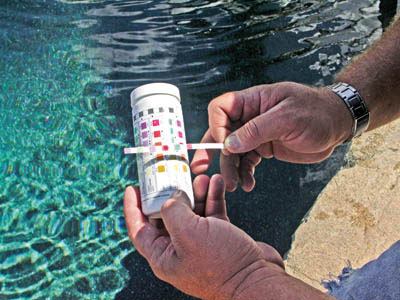Service technicians are reporting unusual fluctuations in the chemical composition of fill water throughout the Sunbelt states.
The water’s composition, they say, often varies significantly from one service visit to the next, making pools difficult to balance and treat effectively. Many have noted abrupt spikes and dips in calcium hardness levels in particular.
“There’s no rhyme or reason to it,” said Lance Sada, owner of A Clear Choice Pool and Spa Service in Sun City, Calif. “Municipalities are pulling from more water sources than ever — they’re blending water, they’re recycling water. There are just too many variables.”
Though sudden variations in the chemical makeup of fill water are not uncommon in rainy or drought-stricken regions, this emerging trend appears to be increasing not only in rural areas dependent on well water, but also in and around major urban centers.
“Well water in rural areas has generally tended to be on the harder side,” said Danny Cervantez, a business development representative at PoolCorp in Van Nuys, Calif. “But lately we’ve been seeing unusually soft water in those areas, while we’re seeing harder water in areas where it used to be pretty chemically balanced.”
Veteran techs say these fluctuations likely reflect changes in municipal water management policies. In the past year, they noted, more cities have begun regulating their supplies by blending water from various wells and storage tanks, and changing the proportions of that blending as needed, sometimes daily.
Though such mixing would be virtually unnoticeable to many consumers, it is wreaking havoc on some techs’ efforts to balance water on a weekly service regimen.
“It can fluctuate from morning to afternoon,” said Steve Sargent, owner of Elite Custom Pools & Spas in Lake Forest, Calif. “So we always test pools before we fill them, and we test as the water is coming out of the hose. You’ve really got to stay on top of it.”
Further complicating matters are phosphates, which provide food for algae and can combine with calcium to form calcium phosphate scale. Though techs say phosphates are unlikely to originate in fill water — more plausible sources are contaminants such as fertilizers and other industrial pollutants — these chemicals can work with hardness variations to create an even less cooperative aquatic environment.
“When we encounter water chemistry that’s difficult to maintain, we find that nine times out of 10, phosphates are involved,” said Steve Ostrowski, president of Chico Pools in Chico, Calif. “Though we’re working to handle these issues, I think a lot of home-owners are going to get hit with green pools as soon as the weather warms up.”
While there’s no silver-bullet solution, experts say the best tactic may simply be to test regularly, and value hard data over assumptions.
“I check every pool when I’m filling it, and I check all my water chemistry parameters on a monthly basis.” Sada said. “You can’t count on anything anymore.”



